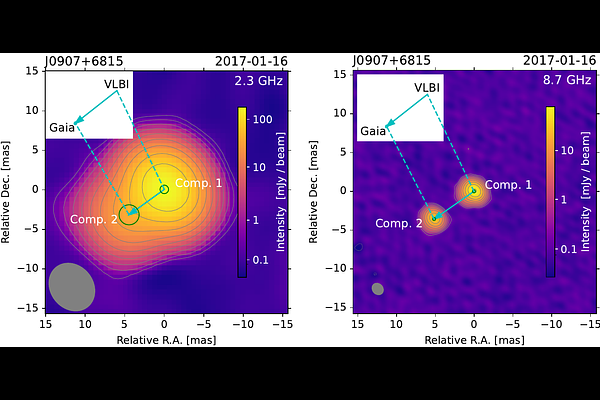Dim cores of radio-bright AGN jets: VLBI and Gaia astrometry pinpoint different parsec-scale features

Dim cores of radio-bright AGN jets: VLBI and Gaia astrometry pinpoint different parsec-scale features
A. V. Popkov MIPT, LPI, Y. Y. Kovalev MPIfR, A. V. Plavin BHI Harvard, L. Y. Petrov NASA GSFC, I. N. Pashchenko LPI
AbstractAstrometry with the very long baseline radio interferometry (VLBI) allows us to determine the position of a point close to the brightest compact detail of the source at milliarcsecond scales. For most active galactic nuclei (AGNs), this compact detail is the opaque core of the radio jet. Rare cases of sources whose brightest detail is not the core but a prominent jet feature parsecs away from the core have been reported, but such sources remained elusive. In this work, we use a novel method for a systematic search of these sources. We scrutinize the AGNs for which the offset between their coordinates determined with VLBI and Gaia is statistically significant and coincides with the vector between two dominant features in their VLBI images, using publicly available archival multi-frequency data. We find 35 sources whose VLBI coordinates are associated with a bright component of their jet separated by several to tens of mas from the radio core. Their Gaia coordinates, in turn, correspond to the jet origin and are close to the radio jet core. The previously published jet directions of most of them must be reversed. These sources exhibit atypically low brightness temperatures of the radio cores, down to 10^9 K in the host galaxy frame, and, at the same time, extreme brightness of the dominating jet components. We argue that these bright components are standing shock fronts and discuss possible physical reasons for the low core brightness, such as ineffective particle heating, atypical absorption, or differential Doppler boosting.